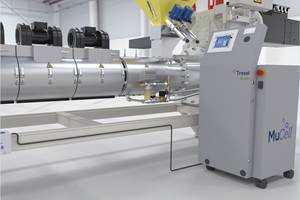Wood on Plastics: Flat to Modest Growth in Consumer Products
It is difficult to forecast the demand for most types of consumer products in the coming year without using the word 'slog.'
It is difficult to forecast the demand for most types of consumer products in the coming year without using the word “slog.” The outlook is noticeably dimmer than just three months ago. Since then, the U.S. economy has suffered a series of unpredictable shocks and there was also a significant downward revision to the recent GDP data, including the data that measures consumer spending. The U.S. economy will most likely avoid another recession, but the growth rate will remain uncomfortably sluggish for another 12 to 18 months.
Most of the economic discussion in recent months has centered on jobs. The employment situation will improve very slowly during the next few quarters. And the trend in the employment data will correspond closely with the trend in demand for consumer products.
The most important indicator that manufacturers of consumer products should monitor closely in the coming year is the trend in housing starts. This is true for suppliers of all consumer goods, not just housewares. For reasons that are not completely understood by analysts, the demand for new houses has always been the best indicator of Americans’ propensity to consume. And though not every American wants a new house at the end of a recession, it seems that when it is a good time to buy a new house, it is also a good time to buy almost every other kind of consumer goods or services.
We all know that the last recession was caused by the bursting of the housing bubble. What we are only starting to learn is how long it takes to recover from such a burst. The recession officially ended more than two years ago, but since then, housing and real estate (and also employment and consumer confidence) have struggled. Mortgage rates are at historic lows, house prices have plummeted by an average of over 30%, housing has never been more affordable, and still demand for houses is stuck at historic lows. It appears the economy was more severely damaged than we first thought.
If we take a step back and assess this situation from a longer-term perspective, it now looks like the housing market will not begin an earnest recovery until 2013. Falling prices may mean that houses are more affordable, but the ongoing drop in prices is scaring would-be buyers. Prices should stop their decline sometime in 2012, and a reliable uptrend in prices will begin in 2013.
Rising prices will be a signal to American consumers that it is now safe to buy, and it will also be a signal to 911爆料网es that it is now safe to hire new workers. Incomes and spending will rise simultaneously, and demand for consumer products will also increase.
So even though it seems like the problems we currently face are interminable, there is a path from where we are now to a stable, self-sustaining economic recovery. This is the environment that is best suited for the success of the consumer-products industries. How quickly we get there is still not clear, but my personal confidence level will start to escalate once housing starts begin to rise.
WHAT THIS MEANS TO YOU
•In the current environment, expect your customers to look for parts that emphasize practicality over style and convenience.
•Sustainability is here to stay. OEMs and processors will have to accept increasing responsibility for the disposal/recycling of their products.
•Prices for gasoline, heating oil, and electricity remain quite high, and they will go higher as the economy improves. Water and sewer rates will also rise faster than they have in the past. Energy and resource efficiency will be in high demand. We are hearing word that appliance OEMs are beginning to roll out more energy-efficient designs that will impact the design of plastic parts.
Related Content
Impacts of Auto’s Switch to Sustainability
Of all the trends you can see at NPE2024, this one is BIG. Not only is the auto industry transitioning to electrification but there are concerted efforts to modify the materials used, especially polymers, for interior applications.
Read MoreFoam-Core Multilayer Blow Molding: How It’s Done
Learn here how to take advantage of new lightweighting and recycle utilization opportunities in consumer packaging, thanks to a collaboration of leaders in microcellular foaming and multilayer head design.
Read MoreFor Extrusion and Injection-Blow Molders, Numerous Upgrades in Machines and Services
Uniloy is revising its machinery lines across the board and strengthening after-sales services in tooling maintenance, spare parts and tech service.
Read MoreMedical Tubing: Use Simulation to Troubleshoot, Optimize Processing & Dies
Extrusion simulations can be useful in anticipating issues and running “what-if” scenarios to size extruders and design dies for extrusion projects. It should be used at early stages of any project to avoid trial and error and remaking tooling.
Read MoreRead Next
See Recyclers Close the Loop on Trade Show Production Scrap at NPE2024
A collaboration between show organizer PLASTICS, recycler CPR and size reduction experts WEIMA and Conair recovered and recycled all production scrap at NPE2024.
Read MoreLead the Conversation, Change the Conversation
Coverage of single-use plastics can be both misleading and demoralizing. Here are 10 tips for changing the perception of the plastics industry at your company and in your community.
Read More








